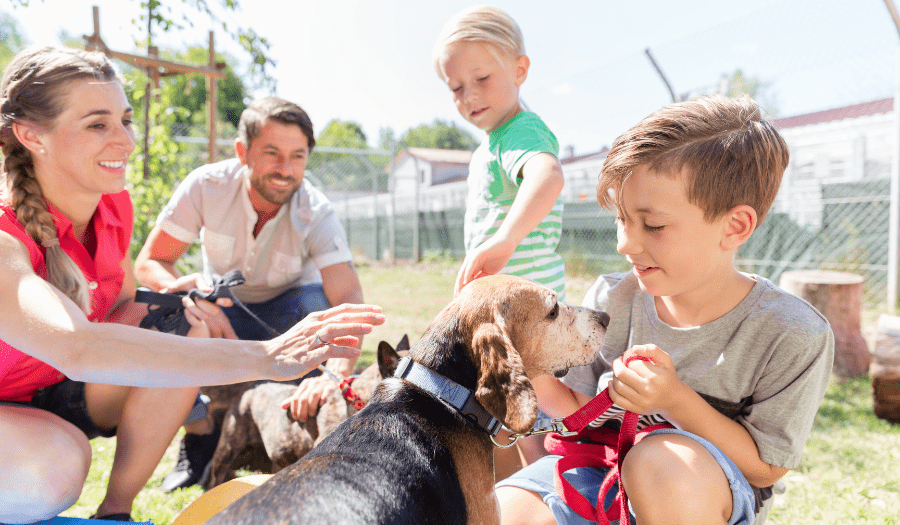Adopting a pet is one of the most rewarding decisions you can make — but it’s also one that requires preparation, patience, and a clear understanding of what type of companion will truly fit your life. Whether you’re thinking about adopting a dog, cat, rabbit, or even a senior pet who’s been waiting far too long in a shelter, the process is much more than “pick a cute one and go home.”
This guide walks you through every step, helps you understand how to choose the right pet for your lifestyle, and prepares you to bring home a new family member with confidence and joy.
1. Understand What Adoption Really Means
Adopting isn’t just providing a home — it’s making a long-term commitment. A pet isn’t a temporary comfort or an accessory; it’s a living being that depends entirely on you for safety, food, medical care, emotional support, and companionship.
Before adopting, ask yourself:
-
Do I have time for daily care, training, play, and bonding?
-
Am I financially prepared for food, supplies, and medical expenses?
-
Is everyone in my household on board with the decision?
-
Can I commit to 10–15+ years for many animals?
When the answer to these questions is yes, you’re ready to take the next step.
2. Consider What Kind of Pet Suits Your Life
Choosing the right pet means understanding your lifestyle. The happiest adoptions happen when personality, energy level, and care needs match the adopter’s daily reality.
A. Dogs: Ideal for Active, Engaged Homes
Dogs thrive on routine, social interaction, and physical activity. Great for:
-
People with flexible schedules
-
Families who want a social companion
-
Individuals who enjoy walking or outdoor time
Not ideal for:
-
Those away from home for long hours
-
People seeking a low-maintenance pet
B. Cats: Independent Yet Affectionate
Cats are perfect for adopters who want companionship without constant supervision.
Great for:
-
Busy professionals
-
Small apartments
-
People who prefer a calmer, quieter pet
C. Small Pets (rabbits, guinea pigs, hamsters)
These pets require specialized care but can be excellent companions.
Great for:
-
Smaller spaces
-
People who prefer gentler, quieter interactions
D. Senior Pets: The Most Overlooked Treasures
Senior animals are loving, stable, and often already trained.
Great for:
-
Adopters who want a calmer companion
-
People who want to make a meaningful difference
3. Visit Shelters, Not Just Websites
Online adoptable pet listings are helpful, but in-person visits matter. When you visit a shelter or rescue center:
-
Spend time observing how animals behave
-
Ask staff about temperament, history, habits, and medical needs
-
Watch how the pet responds to you — relaxed, curious, or reserved?
-
Be honest with shelter staff about your lifestyle; they want to help you find the right match
Shelter workers know each animal’s personality far better than a website description. Their insight is often the key to finding “the one.”
4. Prepare for the Adoption Process
Adopting typically involves:
✔ Filling Out an Application
Shelters want to understand your home environment, working hours, pet experience, and expectations.
✔ A Meet-and-Greet
You’ll spend time interacting with the animal. Some rescues require multiple visits.
✔ Home Checks (in some organizations)
They ensure your living space is safe and suitable for the pet.
✔ Adoption Fees
These usually cover vaccinations, spay/neuter surgery, microchipping, and initial medical care — making adoption far more affordable than buying a pet.
5. Preparing Your Home for the New Arrival
Before your new companion walks through the door, set up:
-
A safe, quiet resting space
-
Food and water bowls
-
High-quality food appropriate for the pet’s age
-
Toys and enrichment items
-
A litter box (for cats)
-
A crate or gate (for dogs)
-
Basic grooming supplies
This preparation helps your pet settle in faster and reduces stress in the first few days.
6. The First 72 Hours: What to Expect
The early days are all about adjustment. Many pets experience “shelter shock” — a mix of confusion, excitement, and stress.
Expect behaviors like:
-
Pacing or hiding
-
Limited appetite
-
Excessive curiosity
-
Clinginess or shyness
Give them time. Use a calm voice, consistent routines, and gentle interactions. Most pets start relaxing after a few days when they realize they’re safe.
7. Building Trust and Bonding
Bonding doesn’t always happen instantly — especially for pets with past trauma or neglect.
To build trust:
-
Maintain predictable routines
-
Use positive reinforcement (treats, praise, play)
-
Allow the pet to approach at their own pace
-
Avoid loud noises or overwhelming environments
-
Spend quality time together every day
Within weeks, many shelter pets blossom into confident, affectionate companions.
8. Common Mistakes New Adopters Should Avoid
❌ Expecting “perfect” behavior right away
Shelter pets need time to learn your rules.
❌ Overwhelming the pet with visitors
Too many new people too soon can cause stress.
❌ Neglecting training
Even adult pets benefit from basic training and structure.
❌ Skipping veterinary follow-up
Regular check-ups ensure your pet stays healthy.
9. Why Adoption Is One of the Best Decisions You’ll Ever Make
Adopting a pet means:
-
Saving a life
-
Giving an animal a second chance
-
Receiving unconditional love in return
-
Improving your own mental and emotional well-being
Studies show that living with a pet reduces anxiety, lowers stress hormones, and increases feelings of purpose and connection.
And for the pet? You become their entire world — the person who gives them comfort, safety, and a forever home.
Final Thoughts
Finding your perfect pet match isn’t luck — it’s thoughtful preparation, open communication with shelter staff, and choosing a companion whose needs align with your life.
When you adopt, you don’t just bring home an animal.
You bring home gratitude, loyalty, joy, and a bond that often becomes one of the most meaningful relationships in your life.
Your future best friend is already out there — waiting for you to walk through the door and say, “Let’s go home.”




